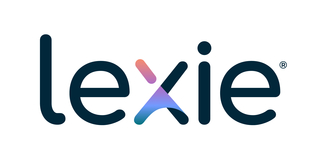- Our Top Picks for Best Hearing Aids
- Best Prescription Hearing Aids
- Best OTC Hearing Aids
-
Best Prescription Hearing Aid Reviews
- Signia Styletto AX: Best Receiver-In-Canal (RIC)
- Starkey Genesis AI: Best for Active Lifestyles
- ReSound Nexia: Best for Auracast Connectivity
- Oticon Intent: Best Hearing Aid AI
- Phonak Naída Lumity: Best for Severe to Profound Hearing Loss
- Widex Moment: Best for Tinnitus
- Other prescription hearing aids we considered
- Best OTC Hearing Aid Reviews
- Hearing Aids Guide
- Best Hearing Aids FAQs
- How We Chose the Best Hearing Aids
- Summary of Money’s Best Hearing Aids
Best Hearing Aids Main Takeaways
- Hearing aids fall into two categories: prescription and over-the-counter (OTC) hearing aids.
- Prescription hearing aids require a professional hearing exam and fitting by an audiologist. These are ideal for all degrees of hearing loss, from slight to profound.
- Adults with slight to moderate hearing loss can purchase OTC hearing aids without a prescription or professional evaluation. Without professional assessment, the cause of your hearing loss is unknown, and the devices may be poorly fitted.
- The price of an OTC hearing aid ranges from $99 to $3,000 per pair. Prescription devices average between $2,000 and $8,000 per pair.
Why Trust Us?
Our editors and writers conduct independent assessments of the hearing aids on this list to ensure accuracy, reliability, and adherence to editorial integrity in our content. Consult the full methodology to learn more.
- 15 hearing aids reviewed
- 17 factors considered
Our Top Picks for Best Hearing Aids
Best Prescription Hearing Aids
- Signia Styletto AX - Best Receiver-In-Canal (RIC)
- Starkey-Livio Edge AI - Best for Active Lifestyles
- ReSound Nexia - Best for Auracast Connectivity
- Oticon Intent - Best Hearing Aid AI
- Phonak Naída Lumity - Best for Severe to Profound Hearing Loss:
- Widex Moment - Best for Tinnitus
Best OTC Hearing Aids
- Sony CRE-E10 - Best Battery Life
- Eargo 7 - Best Discreet Design
- Lexie B2 - Best Over the Counter
Best Prescription Hearing Aid Reviews
The following hearing aids address mild to profound hearing loss and feature the latest advancements in hearing aid technology. You may purchase these at select retailers and audiology clinics after a comprehensive hearing exam. These devices must be programmed and fitted by a hearing care professional.
- Stylish and sleek RIC design
- Wireless charging case
- Bluetooth-enabled streaming for iOS and Android
- Hands-free calling for iPhone users
- Tinnitus relief program only available in select technology levels
- Wireless streaming is optimized for iOS devices
- No telecoil option
Specs
Hearing aid type
Receiver in the canal (RIC)
Type of hearing loss
Mild to severe hearing loss
Technology levels
3 (3AX, 5AX and 7AX)
Battery type
Rechargeable lithium-ion via USB-C or wireless
Battery life
Up to 17 hours
Price range per pair
$4,000 to $7,500
IP rating
IP68
Features
Directionality, up to 48 processing channels, 6 adjustable listening programs, extended dynamic range, up to 20 adjustment bands, extended bandwidth, split speech and background noise processing, feedback cancellation, sound smoothing, tinnitus relief
Warranty
One year
Why we chose the Signia Styletto AX: With a very slim profile, tinnitus relief options and a wide array of additional features, the Styletto AX is a great all-around option for customers looking for high-quality, lightweight and stylish receiver-in-canal (RIC) hearing aids.
All of the devices in the Styletto AX series weigh about the same as a pair of AirPods, making them among the lightest on the market. They also run Signia’s AX platform, which adds improved features that process speech and background noise separately. This enhances speech clarity without compromising the environment's natural soundscape and amplifies the wearer's voice while maintaining its natural quality.
The Styletto AX series packs a lot of features into its slim housing. It offers Bluetooth connectivity to Apple devices, so you can stream directly into the hearing aid. (Note that you need to purchase the StreamLine Mic separately to connect to Android devices.) You can also buy the StreamLine TV to get Dolby quality sound directly from the television.
Most importantly, this series boasts some of the best sound processing technology available. They feature binaural sound processing, which provides a more natural hearing experience and increased directionality, that is, the ability to recognize where sounds are coming from.
- Only hearing aid on the market with IMU (fitness tracking/fall detection)
- Fitness and wellness monitoring via app
- 3-year manufacturer warranty
- In-the-canal (ITC) model available
- Has disposable and rechargeable battery options
- Rechargeable battery only available on the RIC model
- No behind-the-ear model available
- No hands-free calling for Android phones
Specs
Hearing aid type
Receiver-in-Canal (RIC) and custom In-the-Ear (ITE), In-the-Canal (ITC), Completely-in-Canal (CIC), and Invisible-in-Canal (IIC)
Type of hearing loss
Mild to severe hearing loss
Technology levels
4 (24, 20, 16, 12)
Battery type
Rechargeable lithium-ion
Battery life
51 hour battery life without streaming
Price range per pair
$4,400 to $7,500
IP rating
IP68
Features
Wireless audio streaming, hands-free calling for iOS, tinnitus masking, health and fitness monitoring, language translation, speech transcription.
Warranty
Three years
Why we chose the Starkey Genesis AI: An industry-exclusive built-in IMU, flexible warranty and a feature-packed premium model make the Genesis AI a perfect companion for people who also want to keep track of their daily activities.
The Starkey Genesis AI hearing aid is a great choice for those with an active lifestyle, as it’s one of the few devices on the market equipped with an inertial measurement unit (IMU). The IMU includes an accelerometer and a gyroscope that can track your heart rate, movement and positioning. While this feature makes the Starkey Livio AI effective at detecting falls, it also makes it one of the most expensive devices on our list.
The Starkey Genesis AI is also an excellent device for daily wear. Starkey's IntelliVoice speech enhancement feature is top-notch, even with face masks on. You can also take phone calls and stream directly into the device with an iPhone. Unfortunately, you need an additional device to connect to Android phones.
Lastly, while many hearing aids have one-year warranty, the Starkey Genesis AI boasts a three-year warranty. However, this information and some of the documents for the device were hard to find. While this particular fact was a good surprise, transparency is something to keep in mind when buying Starkey products.
- Extra microphone inside the receiver improves sound quality
- Small size makes it excellent for glass wearers
- Multiple color and charger options (including a powerbank)
- Basic models start at around $3,000
- Telecoil option only available in one technology level (7)
- Lacks artificial intelligence capabilities
Specs
Hearing aid type
Behind-the-ear (BTE), receiver-in-canal (RIC), in-the-canal (ITC), in-the-ear(ITE), completely-in-canal (CIC)
Type of hearing loss
Mild to profound hearing loss
Technology levels
3 (levels 5, 7, and 9)
Battery type
Rechargeable lithium-ion and disposable options
Battery life
Up to 30 hours
Price range per pair
$5,000 to $7,200
IP rating
IP68
Features
Telecoil, wireless streaming for iPhone and Android devices, Auracast compatible, wind reduction, directional microphone, feedback management, noise reduction and tinnitus masking.
Warranty
Two years
Why we chose the ReSound Nexia: The ReSound Nexia is the first hearing aid that's compatible with Auracast, an innovative broadcasting technology that might become the standard in cinemas, airports, places of worship, concert halls and other public venues.
Auracast is a broadcasting system that emits a single signal (similar to a radio transmitter) and allows an unlimited number of people to tune in. While far from commonplace, this technology might be the norm in the future, making the ReSound Nexia future-proofed.
Another great feature is the third microphone in the receiver (MicroRIE), which greatly enhances sound localization so you can recognize where sounds are coming from with better accuracy.
ReSound Nexia also stands out for its remarkable battery life. Most rechargeable hearing aid batteries typically last around 20-24 hours or less, especially if you’re using them to stream music or podcasts. ReSound Nexia offers up to 30 hours of battery life on a single charge, with the case providing up to three additional charges for the pair.
Lastly, every technology level includes ReSound’s Tinnitus Sound Generator (TSG), which can drown out tinnitus by helping the brain focus on other sounds.
- 4D sensor and DNN technology improves sound and speech recognition
- LE Audio Bluetooth and Auracast compatible
- Telecoil compatibility available at all technology levels
- Nine color models to choose from
- Thick and bulkier shape than previous models
- 4D Sensor feature is exclusive to the top two technology levels
- Rechargeable batteries can't be replaced at your local hearing clinic
Specs
Hearing aid type
Behind the ear (BTE)
Type of hearing loss
Slight to profound hearing loss
Technology levels
4 (Intent 1, Intent 2, Intent 3 and Intet 4)
Battery type
Rechargeable
Battery life
Up to 20 hours on a 2-hour charge
Price range per pair
$5,030 to $7,770
IP rating
IP68
Features
Noise reduction, motion sensors for adaptive sound settings, Auracast-ready technology, wireless streaming for iPhone and Android, push-button and tap controls, tinnitus masking,
Warranty
One year
Why we chose Oticon Intent: The Oticon Intent builds on Oticon’s advanced sound processing system. This flagship model adds adaptive motion sensor technology and 2nd-generation deep neural network (DNN) technology to capture, recognize and filter sound.
Oticon's DNN 2.0 technology is trained to recognize more than 12 million real-life sounds, helping the wearer’s brain recognize nuanced sounds that would be filtered out otherwise. The company’s Center for Applied Audiology Research states that DNN increases speech understanding by fifteen percent, so you'll be able to listen to friends and family more clearly in all situations.
Oticon's newest 4D Sensor Technology effectively distinguishes between background noise and speech by analyzing the environment, the surrounding conversation, and the wearer's head and body movement. The sensors then regulate the device's sound processing as the wearer's listening needs change moment to moment. Another great perk is that the Oticon Intent includes telecoil compatibility in all its technology levels, so you don’t have to worry about spending more for this feature.
The Oticon Intent can sync with most Apple products for direct streaming and two-way phone calls. It’s only compatible with some Android devices, however, so check if your device is listed on its compatibility page.
- Compatible with all Bluetooth devices
- Telecoil and tinnitus balance available in all technology levels
- 3-year manufacturer warranty
- Motion sensor and tap controls are only available in the rechargeable model
- Not optimized for Auracast or the latest Bluetooth technology
Specs
Hearing aid type
Behind the ear (BTE)
Type of hearing loss
Mild to profound hearing loss
Technology levels
4 (L30, L50, L70, and L90)
Battery type
Rechargeable and disposable options
Battery life
Rechargeable: Up to 16 hours
Disposable: One to three weeks
Price range per pair
$4,000 to $7,000
IP rating
IP68
Features
Universal bluetooth connectivity, artificial intelligence, push button and tap controls, hands-free calling, telecoil on all technology levels, noise reduction, sound amplifier, feedback suppression and tinnitus balance
Warranty
Three years
Why we chose the Phonak Naída Lumity: The Naida Lumity's disposable battery model comes with a zinc-air battery that provides powerful sound processing for those with profound hearing loss, along with telecoil, Bluetooth and a wide array of features.
The UP version of Naída Lumity is the most powerful model, and the most appropriate one for severe hearing loss. It uses a zinc-air non-rechargeable battery as opposed to the lithium-ion battery used in other models. This battery is more powerful and efficient, providing stable and consistent performance.
In addition to its powerful sound processing, the Phonak Naida Lumity stands for its wireless compatibility: it can pair with most devices, including phones, tablets and computers, to get direct streaming into the hearing aid. Moreover, this line includes telecoil and tinnitus balance at all technology levels, offering exceptional value compared to many competitors.
Naída Lumity also has a rechargeable model called the Lumity L-PR. This version includes motion sensing and tap controls, two features that the Naída L-UP model lacks.
- Unique tinnitus relief program
- "Soundsense Learn" feature saves and updates your sound preferences
- Smallest rechargeable lithium-ion battery on the market
- Needs additional devices for Android and TV connectivity
- Remote care/tuning only available through an extra accessory
Specs
Hearing aid type
Behind the ear (BTE), Receiver in the canal (RIC)
Type of hearing loss
Mild to moderate hearing loss
Technology levels
4 (110, 330, 440)
Battery type
Rechargeable (lithium-ion)
Battery life
Up to 20 hours on a single charge
Price range per pair
$4,038 to $7,630
IP rating
IP68
Features
Machine-learning capabilities, Bluetooth, iOS connectivity, push button (program and volume control), noise reduction, tinnitus balance (Zen program), wind and feedback protection
Warranty
Two years
Why we chose the Widex Moment: Widex provides a unique tinnitus relief program, with a catalog of sounds and techniques, along with an easily customizable sound platform.
When it comes to addressing tinnitus, the Widex Moment stands out among other hearing aids. The device can be paired with your phone and connected to a mobile app called Zen, which provides tinnitus relief through music or various calming tones.
This is part of the Widex Zen Therapy, a four-part approach that helps relieve tinnitus and decrease symptoms in the long term. The company also provides a wide array of resources that can help you customize your device and learn techniques to manage symptoms.
All technology levels in this line come with Widex’s “Soundsense Learn” feature, which helps your hearing aid adapt to your surroundings. Access the Soundsense section of the phone app when visiting any specific location and it will prompt you to listen to two sound profiles linked to your vicinity. Once you choose your preferred sound setting, the device will save it to a personal noise profile for future use in similar environments.
Other prescription hearing aids we considered
Phonak Audéo Fit
- Health-tracking capabilities perfect for active lifestyles
- Physical button makes it much easier to use while on a run
- Only two technology levels
- Outdated micro-USB charging port
Why it didn’t make the cut: The Audéo Fit falls short in terms of technology levels and features. We found that other competitors within the same price range offer more features.
Signia Active Series
- Long 26-hour runtime
- Sleek, earbud-style design
- AI smart assistant helps you determine the best sound settings
- Might appear to be too similar to headphones
- Expensive, premium model surpasses $4,000
Why it didn’t make the cut: We found that the Signia Active hearing aid’s high price tag doesn’t justify its features. The device has an exceptional battery life, but it isn’t water resistant and doesn’t have control buttons on the earbuds. This might be frustrating for users who’d like to make adjustments on the fly without needing to reach for their smartphone.
There’s also a lack of available information even on the spec sheet, which doesn’t provide essential information such as estimated battery runtime.
Best OTC Hearing Aid Reviews
Over-the-counter (OTC) hearing devices are designed to be used right after purchase, either immediately or after some adjustments at home, without the assistance of an audiologist. While relatively affordable and popular, studies show that OTC devices can potentially deliver poor sound quality and uncomfortably loud sounds.
"The main issue when buying OTC devices is that, without provider input, the patient lacks proper counseling regarding care and maintenance of the product as well as how it functions," says Dr. Leigh Smith, Au.D., owner and audiologist at Florida Audiology Associates.
We recommend you seek a professional hearing evaluation before investing in an OTC hearing aid.
- Rechargeable battery with up to 26 hours of runtime
- High water and weather resistance factor
- Closed and vented click sleeve options
- No telecoil or tinnitus masking
- Limited professional support if the device isn't working properly
- No audio streaming for Android devices
Specs
Hearing aid type
Visible in-ear
Type of hearing loss
Perceived mild to moderate hearing loss
Battery type
Rechargeable lithium-ion
Battery life
Up to 26 hours of battery life on a 2-hour charge
Price range per pair
$1,300
IP rating
IP68
Features
Bluetooth audio streaming, rechargeable batteries, directional microphone
Warranty
One year
Why we chose Sony CRE-E10: The Sony CRE-E10 is a solid OTC hearing aid that offers some features typically found in prescription devices, but at a lower price point.
Sony CRE-E10 is a self-fitting earbud-style hearing aid for wearers with perceived mild to moderate hearing loss. Unlike Sony's first hearing aid model, the C10, these self-fitting hearing aids can stream audio from your phone and have a weather resistance factor of IP68. This means the device is sweat- and dust-resistant, and you can safely submerge it one meter underwater for up to 30 minutes.
Unfortunately, Bluetooth streaming is only compatible with iOS devices. The Sony Hearing Control app, compatible with both types of operating systems, allows you to adjust the volume, directionality, and bass/treble.
The Sony CRE-E10 is a good option in the over-the-counter hearing aid marketplace. However, like other OTC devices, the amplification quality largely depends on how well it fits the ear canal. A prescription hearing aid fitted and tested by an audiologist will almost certainly result in better amplification and overall fit.
- Sleek, invisible-in-canal (IIC) design
- Rechargeable case
- 45-day, no-questions-asked return policy
- No professional help available for hearing adjustment
- Some users report problems with feedback
- Not Bluetooth compatible
Specs
Hearing aid type
Invisible-in-canal (IIC)
Type of hearing loss
Mild to moderate hearing loss
Battery type
Rechargeable
Battery life
Up to 16 hours on a single charge
Price range per pair
$2,500 to $3,000
IP rating
IPX7
Features
Hands-free calling, iOS and Android-compatible app, speech amplification, noise reduction, in-app customer support
Warranty
Two years
Why we chose Eargo 7: Eargo's most recent generation of hearing aids, the Eargo 7, is currently the only invisible-in-the-canal OTC hearing aid that's also rechargeable. This sleek design renders the device virtually undetectable in the wearer's ear.
The Eargo 7 isn't that much different from its predecessor but has an enhanced noise reduction feature and a greater number of listening programs. Its most significant upgrade, however, is the SoundAdjust+ software, which improves sound processing in loud environments.
Using Eargo's mobile app, wearers can manually adjust the device's SoundAdjust+ settings to focus on speech enhancement or background noise reduction. Users can also select and modify up to four sound preset programs on the mobile app, adjust the volume, treble and bass in one or both devices, and create presets for future occasions.
If you encounter any issues with the device, you can set up a meeting with Eargo's support staff directly on the mobile app. That said, Eargo's in-house support staff doesn't replace a professional exam and fitting. And since OTC hearing aid manufacturers don't license their software to audiology clinics, wearers can't seek professional in-person assistance for malfunctioning devices.
- Rechargeable battery with up to 18 hours of runtime
- Customizable sound profile on mobile app
- Charges through USB-C
- No streaming capabilities or telecoil
- Limited professional support if the device isn't working properly
Specs
Hearing aid type
Receiver-in-canal (RIC)
Type of hearing loss
Perceived mild to moderate hearing loss
Battery type
Rechargeable lithium-ion
Battery life
Up to 18 hours on a single charge
Price range per pair
$999
IP rating
IP67
Features
Rechargeable batteries, directional microphone, noise reduction, feedback cancellation
Warranty
One year and 45-day risk-free trial
Why we chose the Lexie B2 Plus: The Lexie B2 Plus hearing aid, powered by Bose, provides the most customizable experience among over-the-counter options while still maintaining a competitive price point.
The Lexie B2 Plus is a self-fitting and self-customizable hearing aid sold for $999 at major retailers, mainly Walgreens and CVS. The guide helps you select the wire length, and the package includes different domes for the in-canal receiver.
Through the Lexie app, users can control bass and treble, turn up lower surrounding sounds for a more immersive experience, and customize sound directionality. You can also preset favorite settings that fit the places you frequent the most.
Unfortunately, the B2 doesn't stream content from your phone or include telecoil. While Lexie does offer the Lumen model, which includes telecoil and retails for less at $799, it has fewer features and less customization compared to the B2 model.
Other OTC hearing aids we considered
MD Hearing Volt Hearing Aid
- Inexpensive at $600
- Two-year warranty and 45-day risk-free trial period
- Free shipping on all devices
- Sound profiles are preset and you can't change them
- Large and bulky behind-the-ear design
Why it didn’t make the cut: The Volt lacks smartphone or Bluetooth connection, which means that users can't program or adjust the hearing aid from a mobile device. MD Hearing does have a premium model called “Core” that includes programming via an app, but the device falls short for two reasons: it isn’t water resistant and doesn’t include rechargeable batteries.
Audien Hearing Atom series
- Inexpensive models
- Rechargeable batteries on all devices
- Limited features
- Not water resistant
- Limited information and device specs online
Why it didn’t make the cut: Audien Hearing devices lack features like background noise reduction, water resistance, telecoil and wireless connectivity. More importantly, the company product page doesn't make a clear distinction between its PSAP hearing devices and its FDA-registered over-the-counter hearing aids, which may confuse consumers.
Audicus
- Some models allow remote adjustment
- Water resistant
- 45-day trial
- Multiple payment options: upfront, financing or monthly membership
- Online hearing test may not be as accurate as an in-person evaluation
- In-person service is only available in Chicago, Denver and New York City
Why it didn’t make the cut: Audicus diagnoses your level of hearing loss with an online hearing test and this testing format might not be as accurate as an in-person test administered by a specialist.
Jabra Enhance Select series
- Excellent warranty
- 100-day risk free trial
- Free shipping and returns
- In-app support from audiology team
- Not for children or moderate to profound hearing loss
- Not compatible with Android devices
- The best warranty and audiology team support costs $200 extra
Why it didn’t make the cut: Jabra’s Enhance Plus works exclusively with iOS devices. The hearing aids are designed to work with the Jabra Enhance App and receive support from hearing specialists. However, wearers have to pay $200 extra to access in-house support and Jabra's three-year warranty.
Hearing Aids Guide
When buying a hearing aid, it’s crucial to understand the device's features and functionality. Most hearing aids do an excellent job at capturing daily environmental sounds and regular conversations, so you’ll have plenty of options if those are your main concerns.
Before you start shopping, you may want to see a doctor for a professional hearing exam. This will help you understand the extent of your hearing loss and find out whether it's caused by an underlying condition.
Read on to learn more about hearing aids, how these devices work and how to buy the right one.
- What are hearing aids?
- How do hearing aids work?
- Types of hearing aids
- How much do hearing aids cost?
- How to choose the best hearing aid for you
What are hearing aids?
A hearing aid is a small electronic device that you wear in or behind your ear to enhance your hearing. Just like with eyeglasses, the device isn't meant to cure hearing loss, but to assist individuals experiencing difficulty hearing clearly. Digital hearing aids are prevalent in today's market, offering greater efficiency compared to analog models.
Hearing aids can help with almost all levels of hearing loss, although profound hearing loss is usually handled by a special hearing aid called a cochlear implant, which connects the hearing aid to the inner ear.
You’ll need to undergo a hearing test first. Then, a hearing specialist will program the new hearing aid to the specific degree of hearing loss observed in the test. Some hearing aids have automatic features that adjust volume for improved hearing in different listening environments.
Hearing aids vs. cochlear implants
While they both treat hearing loss, these devices work very differently. Hearing aids are wearable devices that can be easily removed, while cochlear implants require surgery.
Hearing aid
Cochlear implant
Wearable devices that can be easily removed (no surgery required)
Surgically implanted and connected directly to the auditory nerve
Amplifies sound and makes it easier for users to detect and understand these sounds
Transmits signals to the auditory nerve, which the brain then processes and understands as sound
Suited for people with mild to profound hearing loss and fair speech understanding
Used by deaf people or people with severe hearing loss
Hearing aids vs. personal sound amplification products (PSAPs)
Also known as amplifiers, PSAPs closely resemble hearing aids in appearance and functionality, amplifying sound for the user's benefit. However, unlike hearing aids, they are not classified as medical devices and are not specifically designed to address hearing loss.
While PSAPs are typically more affordable than hearing aids, they’re not a good substitute. Using these devices without addressing the root cause of your hearing loss could exacerbate the problem. Additionally, indiscriminate sound amplification could be harmful to the ear.
Hearing aid
PSAPs
Wearable medical devices that can be easily removed
Auditory equivalent of binoculars for people with normal hearing — they pick up and amplify sounds in the environment
They amplify sound and make it easier for users to detect and understand these sounds
Often used for tactical purposes, hobbies or other activities that require noise enhancement
The device is able to differentiate between different types of sound, process it and amplify it to the necessary degree
Not suitable for people with any degree of hearing loss
How do hearing aids work?
All modern hearing aid brands have three basic parts.
- Microphone: Receives sound and sends it to a microchip that converts it into a digital signal.
- Amplifier: Increases the strength of the digital signal.
- Speaker: Reproduces the amplified sound into the ear.
Over-the-counter vs prescribed hearing aids
As of October 17th, 2022, the Federal Drug Administration(FDA) allowed retailers to sell hearing aids without a prescription to customers 18 years of age and older.
The new legislation by the Biden-Harris administration allows people with perceived mild to moderate hearing loss to access over-the-counter devices without a medical exam, prescription, or professional fitting. Stores like Walmart, Walgreens, CVS, and Best Buy have started selling over-the-counter models since then.
Close to 30 million adults in the U.S. may benefit from hearing aids. However, not all hearing aids are created equal. Even though OTC models are now more accessible, professional fittings and prescription devices are still the best option.
Over-the-counter
Prescribed hearing aids
Intended for mild to moderate hearing loss
Suitable for all degrees of hearing loss, from mild to profound
Sold at pharmacies, online and physical stores without a medical exam or professional fitting
Available through an audiologist after a medical exam and diagnosis
Prices range from $799 to $1,000
Prices range from $2,000 to $8,000
Not sold to people under 18 years of age
Suitable for patients of all ages
Regulated by the FDA
Regulated by the FDA
Hearing aid technology levels
When a hearing aid manufacturer releases a new model, that device typically features several technology or performance levels. This means you can select the number of features you want your specific device to have.
When discussing 'features,' we're not just referring to physical attributes like telecoil or water resistance, but also to the software integrated into the hearing aid's processor. This is analogous to the features found in smartphones, encompassing both hardware and software components that define the device's functionality.
The most basic technology levels are affordable but limited in functionality. Opting for a premium technology level, though more expensive, provides your audiologist with a wider range of tools for fitting and adjusting the device to your ear.
Technology levels used to be limited to around three to four options. However, nowadays, some manufacturers offer anywhere from one to six. The table below provides an overview of average technology level names and the typical features associated with each of them.
Technology level
Features
Basic
Feedback suppression, noise reduction, speech compression
Standard
Feedback suppression, noise reduction (1-3 levels), speech compression, wind noise management, tinnitus relief, binaural processing
Advanced
Feedback suppression, noise reduction (1-4 levels), speech compression, wind noise management, tinnitus relief, binaural processing, wireless capabilities, directional microphone adaptability, auto volume, music enhancer, telecoil
Premium
Feedback suppression, noise reduction (1-4 levels), speech compression, wind noise management, tinnitus relief, binaural processing, wireless connectivity capabilities, directional microphone adaptability, auto volume, music enhancer, telecoil, natural sound smoothing, sound classifier, range extender
Hearing aid features to know
Telecoil or T-coil
A T-coil, a copper wire in your hearing aid, responds to magnetic fields, generating a signal detectable by other T-coil-equipped devices. For example, if your hearing aid and smartphone both have a T-coil, you can hear phone calls without holding the phone to your ear.
Feedback suppression
Feedback occurs when a microphone picks up sound from a speaker simultaneously transmitting from that same microphone, resulting in high-pitched noise. Feedback suppression identifies and digitally reduces or eliminates these sounds before they reach the wearer's ear, improving the hearing experience.
Speech compression
A hearing aid amplifies speech sounds in the user's ear. Speech naturally varies in volume, but without compression, amplification can distort loud sounds. Speech compression digitally processes incoming speech to amplify quiet sounds while maintaining an appropriate level for loud sounds.
Tinnitus relief
Tinnitus is a ringing, buzzing, clicking or roaring sensation in the ear, audible only to the affected individual. It can result from various causes, including old age, exposure to loud noises, inner ear damage or certain medications, often affecting those with hearing loss.
While there is no cure for tinnitus, hearing aids can help manage its perception. Most devices mask tinnitus by amplifying surrounding sounds to divert attention from the ringing. Newer models also utilize sound therapy, such as white noise or music, to alleviate symptoms.
Binaural processing
Binaural processing combines auditory input from both ears for improved sound quality and reduced background noise. Without it, users receive unregulated input from both ears simultaneously, leading to an overwhelming listening experience.
Wireless connectivity capabilities
Wireless connectivity, via Bluetooth or WiFi, links your hearing aid to devices like smartphones, tablets, TVs and computers without cables. This feature establishes a direct connection, eliminating background noise and enabling users to adjust sound levels and settings from their smartphone instead of using manual controls.
Directional microphone adaptability
Directional microphone adaptability automatically adjusts the microphone's direction based on the source of speech and sound. In noisy environments, for instance, the microphone focuses on the speaker's voice while reducing background noise, ensuring clearer communication.
Music enhancer
Hearing aids prioritize speech sounds over music, as music's wider range can be challenging to accurately amplify. Advanced models may offer customizable settings programmed by you or your audiologist for specific environments, such as concert venues or home music listening.
Sound classifier
Environmental classification, also known as sound classification, identifies sounds and adjusts device settings accordingly. It distinguishes speech in various environments, activating the most appropriate settings for optimal performance.
Types of hearing aids
There are two main types of hearing aids: behind the ear (BTE) and canal hearing aids. Both hearing aid styles come in a variety of configurations to best suit the user’s comfort and hearing loss level.
BTE-style hearing aids include receiver-in-canal (RIC) aids, while canal hearing aids can be further broken down into four more different styles. We explain each one below.
Behind-the-ear style hearing aids
- Device position diminishes sound blocking
- Can address mild to profound hearing loss
- Chassis size makes it possible to include other functionalities
- Chassis is more durable
- Receivers can break easily and require frequent maintenance
- Not as discreet as canal hearing aids
- Large casings placed behind the user’s ear, with a tube that redirects sound into the ear canal.
- Receivers can break easily and require frequent maintenance
- Addresses mild to profound hearing loss
- Chassis is more durable and able to fit more functionalities.
- Not as discreet as canal hearing aids.
Receiver-in-canal (RIC) aids
- Smaller than BTE hearing aids
- Easy to fit to patient's ear compared to in-ear and in-canal models
- Receiver and microphone placement render a clearer sound and reduced feedback
- Less powerful than BTE models
- Receiver is more susceptible to moisture and earwax buildup
- Smaller than BTE models, less suitable for people with profound hearing loss
- Easy to fit to patient's ear compared to in-ear and in-canal models
- Receiver and microphone placement render a clearer sound and reduced feedback
- Receiver is more susceptible to moisture and earwax buildup
In-the-ear (ITE) hearing aids
- Custom fitted to fit the contours of your ear
- Easy to remove and adjust as needed
- Available in two styles: full or half-shell
- More noticeable, compared to other in-canal aids
- May pick up more background noise
- Custom-fitted to the contours of the wearer's ear
- Comfortable and easy to remove and adjust as needed
- Available in two styles: full or half-shell
- May pick up more background noise
In-the-canal (ITC) hearing aids
- Except for in-the-ear (ITE) models, most canal models are discreet
- They are custom-molded to your ear canal
- They use less battery power than BTE models
- Batteries are smaller thus have shorter runtimes
- Can be problematic to put on if you have dexterity challenges
- Their small size makes it difficult to add features like Bluetooth
- They are easier to lose or misplace
- They only address mild to moderate hearing loss
- Except for in-the-ear (ITE) models, most canal models are discreet
- Custom-molded to your ear canal
- They use less battery power than BTE models
- Small size limits the number of features like Bluetooth capabilities
- Battery runtime tends to be shorter
- Not suitable for moderate to profound hearing loss
Completely-in-canal (CIC) and invisible-in-canal hearing aids
- Smaller and almost indetectable
- Less sensitive to wind
- Reduces the occlusion effect that can happen with other devices
- Small batteries may be difficult to handle
- Less features than other hearing aid models
- Best for mild to moderate hearing loss
- Virtually undetectable
- Less sensitive to wind
- Reduces the occlusion effect that can happen with other devices
- Small batteries may be difficult to handle
- Less features than larger hearing aid models
- Best for mild to moderate hearing loss
How much do hearing aids cost?
Retailers such as Walgreens and CVS report that prescription hearing aids cost $2,000 to $8,000 a pair, depending on the model and retailer. Over-the-counter alternatives are slightly more affordable, priced around $200 to $3,000 per pair.
It’s important to check technology levels when comparing hearing aid prices. How much each level costs and the number of features it includes can vary widely depending on the manufacturer.
For example, the Signia Styletto AX model has three technology levels which range from $2,332 for a single level-one device to $3,635 for a single level-three model.
Does Medicare pay for hearing aids?
Unfortunately, Medicare usually doesn't cover the costs of hearing aids, exams or professional fittings. However, some Medicare Advantage plans offer coverage for services that Medicare doesn't include, such as vision, dental and hearing.
How to choose the best hearing aid for you
When choosing a hearing aid, keep in mind your level of hearing loss, your personal preferences and your overall lifestyle. These are expensive medical devices that will be in your ears for the better part of three to seven years.
Consult a hearing care professional
Consult a hearing care professional like an audiologist or otolaryngologist for accurate hearing assessment and identification of any underlying conditions. While free online hearing tests are available, professional assessments, such as "real ear measurements," ensure precise programming tailored to your needs.
"In-person tests are much more detailed and will diagnose the type of hearing loss, whereas at-home tests do not," says Dr. Smith. "At-home tests are unable to identify the site of the problem (outer ear, middle ear, or inner ear), are not performed with calibrated equipment or under sound isolation standards, and do not test speech or background noise performance of the patient."
"In my professional opinion, there is no positive side to at-home testing as it has not proven to be accurate, nor does it recommend a referral for professional testing or prescription devices when the patient falls outside of the recommended OTC guidelines," she adds.
A hearing aid professional will also schedule follow-up appointments to see how you’re adjusting to the device and make any necessary modifications. It can take several months to get used to a new hearing aid and find the settings that work best.
Note which features are most important to you
After your initial evaluation, your healthcare provider will assist you in selecting an appropriate device. Based on your needs, consider features like water resistance, rechargeability, smartphone compatibility, wireless capabilities and physical buttons.
Active individuals may prefer a hearing aid with an IP68 rating for durability and water resistance. Musicians may require a device capable of capturing complex sounds, while theater enthusiasts may benefit from a telecoil for direct sound reception from actors' microphones.
Go to a clinic with multiple hearing aid options
"Patients should seek out offices that have options for hearing aid brands as there are not any companies that manufacture a one-size-fits-all product," says Dr.Smith.
"OTC options are not recommended as they are not manufactured to be able to receive professional support (except in rare instances, i.e. Jabra by GN). We also openly advocate against purchases made through national retail chains that lock the software and prevent users from seeking a second opinion at outside facilities," she adds.
Keep an eye on warranties, payment plans and trading discounts
Since hearing aids require a significant investment, it's important to plan financially. Consider extending your warranty for an additional two to three years, as this can protect you from additional costs in the future.
Also, look into payment plans offered by manufacturers, hearing centers or direct-to-consumer devices to make hearing aids more accessible. Lastly, inquire about trade-in options for old hearing aids when purchasing new ones.
Look for financial assistance
Numerous programs and organizations can assist you with obtaining or financing hearing aids. Each has distinct services and eligibility criteria, so research is essential before applying. Below are some listed programs for reference.
- Hearing Charities of America’s “The Hearing Aid Project”
- Easterseals Hard of Hearing and Deaf Services
- Military Audiology Association’s “Retiree Assistive Listening Devices (RALD) Program”
- Medicaid state benefits
Best Hearing Aids FAQs
How long do hearing aids last?
Where can I buy over-the-counter hearing aids?
Are OTC hearing aids any good?
How long do hearing aids last?
How We Chose the Best Hearing Aids
We thoroughly researched 14 companies and their hearing aid products, assessing functionality, lifestyle fit, features, price, battery life and manufacturer's warranty to find options tailored to diverse needs and offering the best value.
- Functionality and lifestyle: Our selections primarily consist of BTE RIC models, known for their flexibility in addressing mild to severe hearing loss. We also took into consideration different user lifestyles when choosing our top devices. So, if you love exercising or if you suffer from severe hearing loss, you’ll find an option on our list.
- Features and price: We looked at all included features, especially those included from the basic models to the most premium one, in order to find the best value. Since prices vary greatly from device and technology level, we list the average price range of each hearing aid.
- Phone compatibility: Bluetooth streaming and mobile app capabilities depend on whether the device supports Android and iOS phones. Most hearing aids are fully compatible with iPhones, but Android users have fewer options when it comes to Bluetooth streaming and hands-free calling.
- Battery: We evaluated a hearing aid’s battery types, preferring hearing aids that had rechargeable batteries whenever possible. We also took note of devices with charging cases that allowed for multiple recharges.
- Manufacturer’s warranty: We looked for companies and hearing aids that offered more than the standard one-year manufacturer warranty. Those that offered two or three years scored higher with us.
Summary of Money’s Best Hearing Aids
Best Prescription Hearing Aids
- Best Receiver-In-Canal (RIC): Signia Styletto AX
- Best for Active Lifestyles: Starkey Genesis AI
- Best for Auracast Connectivity: ReSound Nexia
- Best Hearing Aid AI: Oticon Intent
- Best for Severe to Profound Hearing Loss: Phonak Naida Lumity
- Best for Tinnitus: Widex Moment





















